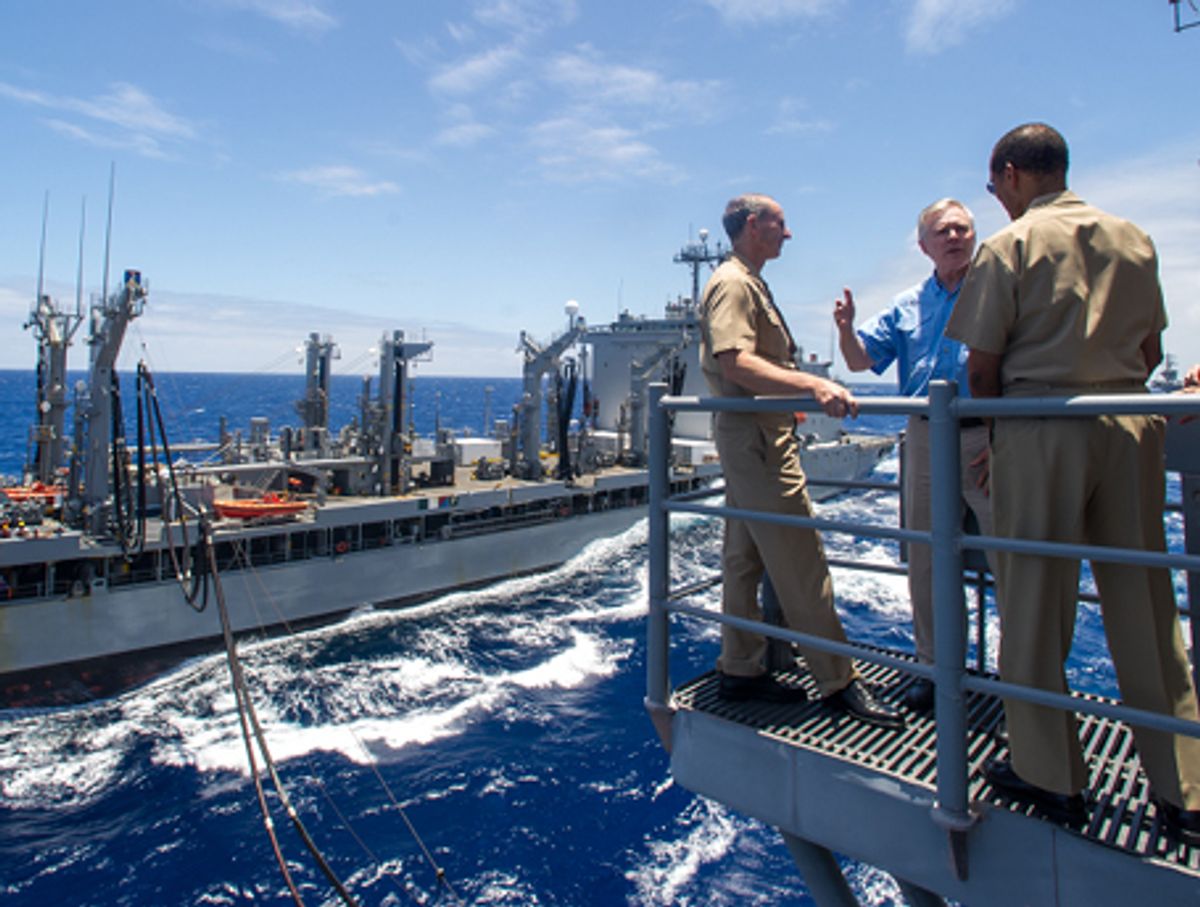The "world's largest maritime exercise" has a bit of an environmentally friendly sheen to it this year. The U.S. Navy unveiled its "Great Green Fleet" during the Rim of the Pacific (RIMPAC) war games this week, featuring fighter jets and several ships running on mixes of conventional fuel with various types of biofuels. The military has long been out in front of much of the U.S. government when it comes to energy initiatives, realizing early on that reducing the use of oil is a logical step to take for many reasons.
Secretary of the Navy Ray Mabus was on board the USS Nimitz on Wednesday, an aircraft carrier that took on 180 000 gallons of 50-50 fuel. The mix includes jet fuel along with algal oils and recycled cooking grease. Not, of course, to run the Nimitz itself -- the carrier is nuclear powered -- but for use in F/A-18E/F Super Hornets and other aircraft. Several other vessels, including the USS Chafee, the USS Chung Hoon, the USS Princeton, and the USNS Henry J Kaiser will also participate in the green fleet demonstration. The surface vessels will burn 350 000 gallons of a mixture of renewable diesel fuel and standard marine diesel.
Mabus has set a goal of getting fully 50 percent of the Navy's energy from "alternative sources" by 2020. Even more aggressively, by 2015 he wants the commercial vehicle fleet to reduce petroleum use by 50 percent. Such numbers would sound far-fetched in civilian life, but the military might be well suited to actually reaching these goals. There are still controversies over the actual environmental impacts of various types of biofuels, of course, and critics say the Navy's specific ideas are economically impossible, but it's a step in the right direction.
The demonstration going on right now in the waters near Hawaii is just a showcase for the viability of using alternative fuels in large-scale naval operations. RIMPAC, which dates back to 1971, includes 22 countries engaging in more than a month of war games exercises. More than 40 ships and submarines are involved, along with hundreds of aircraft and 25 000 military personnel. According to the Navy, the point of RIMPAC is to help "participants foster and sustain the cooperative relationships that are critical to ensuring the safety of sea lanes and security on the world's oceans," but at least for a few days and on a few ships it's also about transitioning to cleaner energy sources as well.
Image: Navy Secretary Ray Mabus observes transfer of biofuels to the USS Princeton during RIMPAC 20. Via US Navy.
Dave Levitan is the science writer for FactCheck.org, where he investigates the false and misleading claims about science that U.S. politicians occasionally make.




